Panasonic CT-S1390Y
September 4, 2024, 2:46 am
August 8, 2025, 12:38 pm
Summary
A CCTV Monitor with good TVL for its size (420). RGB Mod is possible but sort of a pain because it needs to be amplified with a THS3714 (see instructions below). The perfect method of RGB modding this TV is still under dispute/development by several people and will be updated if a better method is presented in the future. At this time I do not personally reccomend investing time or money in this RGB Mod because it doesnt have consistent color levels across multiple input sources. I unfortunately did not discover this problem until after finishing my project.
Manuals
Mods & Repair Guides
Notes
Press "Color Up" and "Sharpness Up" simultaneously for 2 seconds to activate the service menu for sub adjustments and h-position. If you get stuck with the service menu displayed even after power cycling the monitor, press "Color Up" and "Brightness Up" simultaneously for 2 seconds to activate the self-test mode and then turn off the monitor. This is the only way I could figure out a way out of the service menu being stuck.
Repair Notes
One unit would shut down a second after it was turned on, which turned out to be caused by a gassy tube which would glow violet in the neck for that initial second. Unit worked perfectly when paired with a properly working tube. I was able to do a tube swap with an A34JLL40X. This required using the original Panasonic yoke or else the raster was much too big on both axes.
Gallery

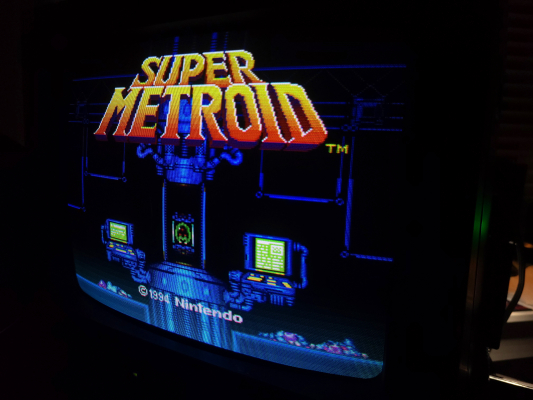
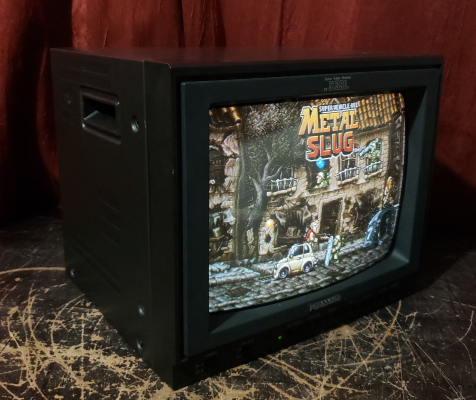


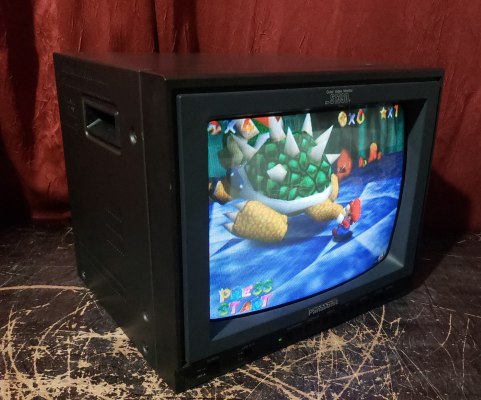

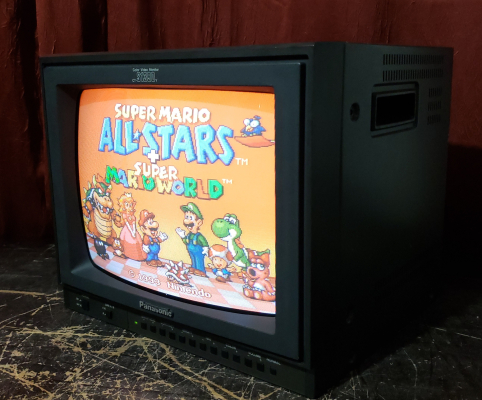

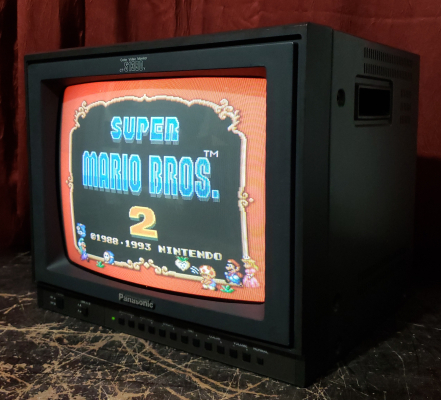
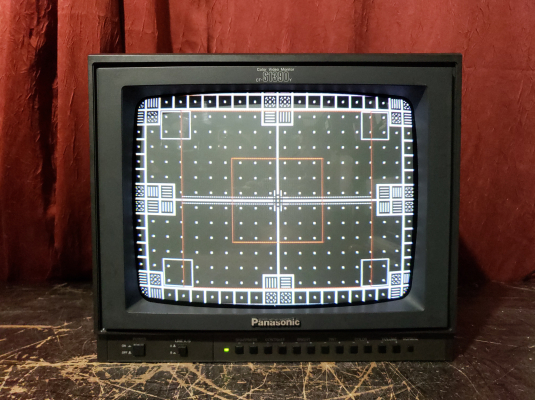

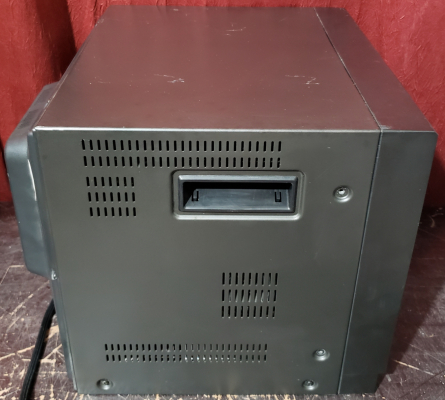
| Specifications | |
|---|---|
| Brand: | Panasonic |
| Manufacturer: | Panasonic |
| Model: | S1390Y |
| Series: | CT |
| Viewable Size: | 13" |
| Inputs: | Composite, S-Video |
| Sync: | CSYNC |
| Native Resolutions: | 240p, 480i |
| Linecount: | 420 TVL |
| Horizontal Scan Range: | 15 kHz |
| Vertical Scan Range: | 50 Hz, 60 Hz |
| Formats: | NTSC |
| Aspect: | 4:3 |
| Adjustments: | Internal Potentiometers, OSD Service Menu |
| Horz. Output Transistor: | BU2506DF, BU2506DFLB |
| Vertical Output IC: | LA7835-TV |
| Jungle IC: | AN5163K |
| Flyback: | LCE CF0754, TLF15615F2 |
| Focus Type: | Single |
| Tube: | Matsushita (MTC) , 37GDA85X |
| Deflection: | 90° |
| Mask: |
Slot

|
| Yoke: | TLC2042-3 |
| Yoke Horz. Resistance: | 4.1 ohm |
| Yoke Vert. Resistance: | 13.1 ohm |
| Speakers: | Mono |
| Chassis: | G15M |
| Weight: | 28 lbs (12.7 kg) |
| Dimensions (W/H/D): |
365 x 318.5 x 393 mm
(14.3 x 12.5 x 15.4") |
| Application: | Professional |
| Cabinet Material: | Metal |
| Launched: | 1994 |
| Country of Manufacture: | Mexico |
| Market: | North America |
| Power Standard: | 120v |
| Mounting: | Rackable |
| Mods: | RGB via Mux |
| Degaussing: | Automatic on Power-on |
| Tag: | Repair Log |

 This work is licensed under a
This work is licensed under a